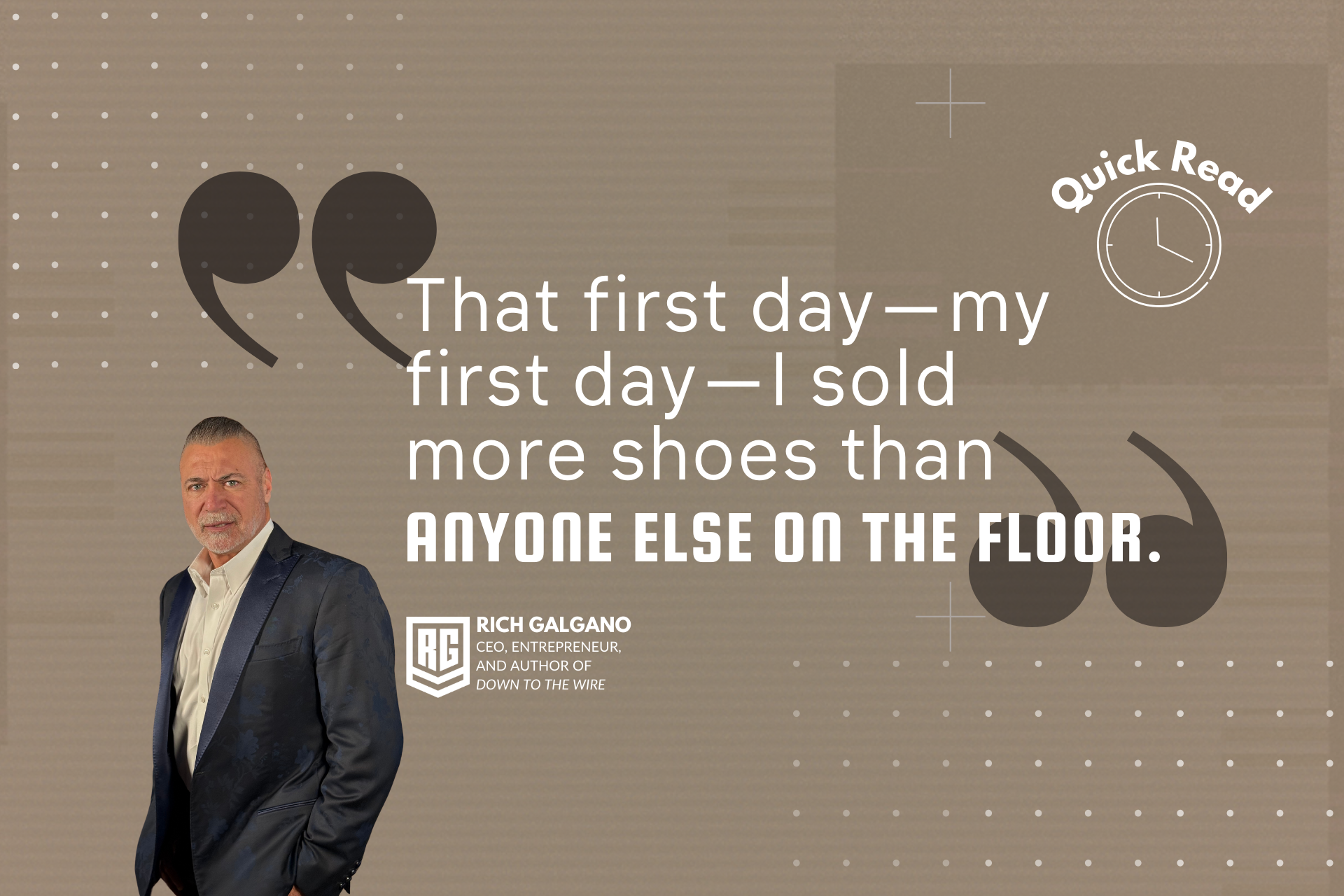"If Nothing Changes, Nothing Changes": Recognizing Chaos and Dysfunction and Choosing Change
By Rich Galgano
In 1993, I sat in a Gamblers Anonymous meeting, desperate for something—anything—to turn my life around. That’s where I first heard the phrase, “If nothing changes, nothing changes.” It hit me like a brick. Those words forced me to confront an uncomfortable truth: my way of thinking, my habits, and my choices had brought me to this breaking point. If I wanted to climb out of the chaos, I couldn’t keep doing the same things and expecting a different result.
That simple phrase has stayed with me for over 30 years. It’s been a mantra not just for personal recovery but also for how I’ve built businesses, solved problems, and led teams. Knowing that change is necessary isn’t the hard part—it’s recognizing when change is needed and finding the courage to act.
How Do You Recognize Chaos and Dysfunction?
Before you can change, you have to recognize what’s broken. Chaos and dysfunction often disguise themselves as normal. You get used to the noise, the fires to put out, or the slow drain of inefficiency. But dysfunction often has its tells:
- Stagnation: Progress has stalled, and you’re just going through the motions.
- Frustration: Stress, tension, and dissatisfaction dominate your day.
- Reactive Behavior: You’re always putting out fires, never addressing the root cause.
- Repeating Problems: The same issues keep resurfacing, no matter what you do.
- Lack of Alignment: Your priorities clash with those around you, whether it’s loved ones or business teams.
For me, the dysfunction in my gambling days was painfully obvious. But later, in business, I learned to spot more subtle forms of chaos: misaligned goals, processes that didn’t scale, or complacency that stifled innovation. Recognizing the chaos is the first step toward change. Without that acknowledgment, things are unlikely to change.
When Do You Need to Change?
Not every challenge calls for change, and not every problem is a sign of dysfunction. So how do you know when it’s time to act? Here are the questions I ask myself:
- Are you growing, or regressing?
Growth isn’t always linear, but if you’re consistently moving backward, it’s a clear sign something needs to shift.
- Are your values aligned with your actions?
Chaos often stems from a disconnect between what you say you value and what you actually do.
- Are the same problems recurring?
Recurring issues are a red flag. Band-aid solutions won’t cut it. Real change often requires addressing the root cause.
- Is your environment supporting success?
Dysfunction often thrives in toxic relationships, inefficient processes, and outdated tools. Sometimes, the change you need starts with your surroundings.
- Are you too comfortable?
Comfort is the enemy of progress. If you’ve stopped challenging yourself, you’ve likely stopped growing.
The Courage to Choose Change
Knowing you need to change is one thing. Acting on it is another. Change requires courage because it often feels like stepping into the unknown. But staying in dysfunction comes with its own risks—ones that often lead to stagnation, frustration, and missed opportunities.
Why It Matters
“If nothing changes, nothing changes”. Whether in life or business, staying stagnant in chaos tends to lead to one thing: things will stay exactly as they are. Progress starts with recognizing the need for change and taking action.
For me, hearing those words in a Gamblers Anonymous meeting was the beginning of a transformation. I didn’t just stop gambling; I started rebuilding. That principle guided me as I grew businesses, solved problems, and created opportunities where none existed. Change isn’t easy, but it’s usually always worth it.
Final Thought: Make the Choice
The next time you’re frustrated, stuck, or overwhelmed, ask yourself: What needs to change? Then take the first step. Change doesn't typically happen by accident, and it doesn’t wait for the perfect moment. It happens when you choose it. The sooner you take that step, the sooner you’ll see the results.
Remember: If nothing changes, nothing changes. So, what will
you change today?











